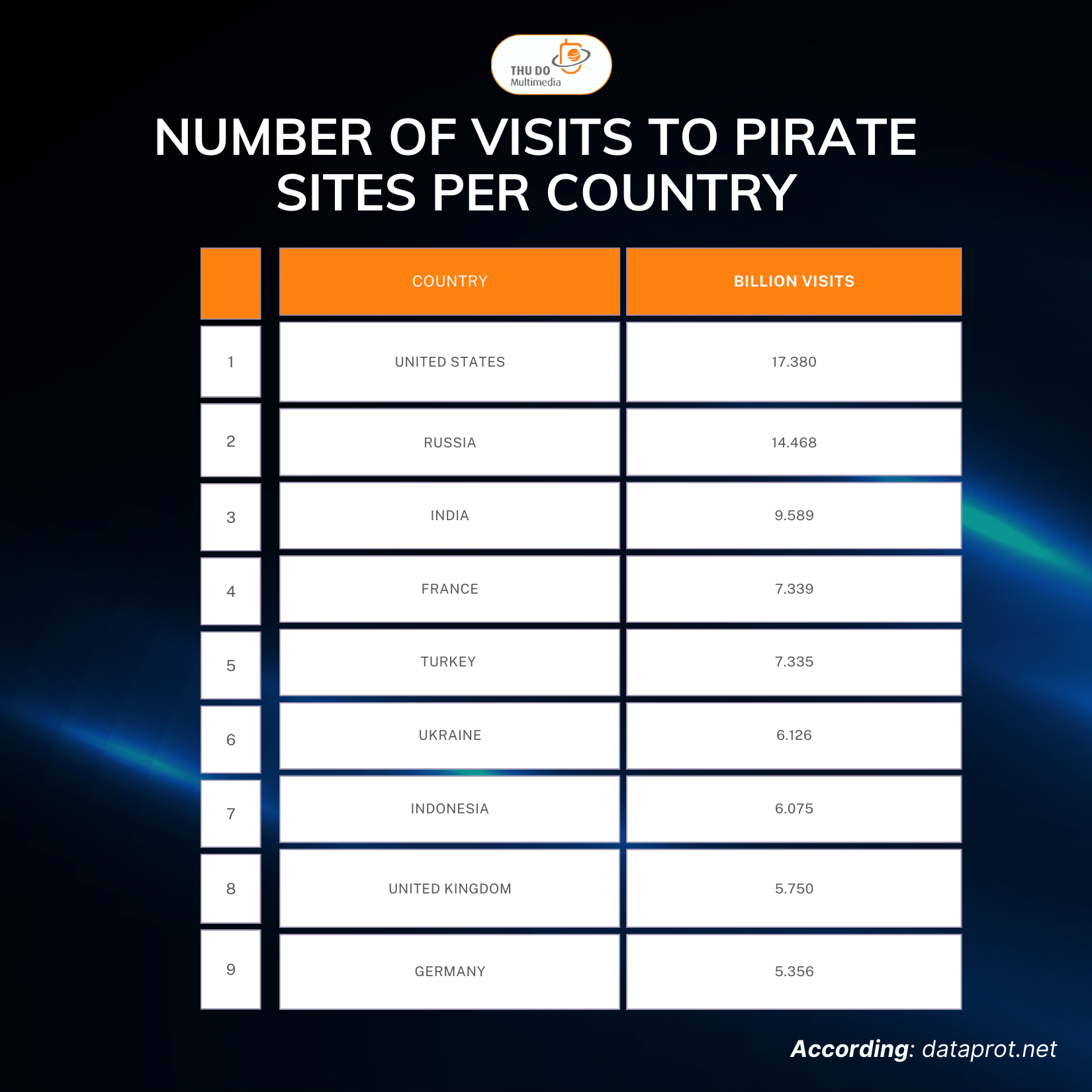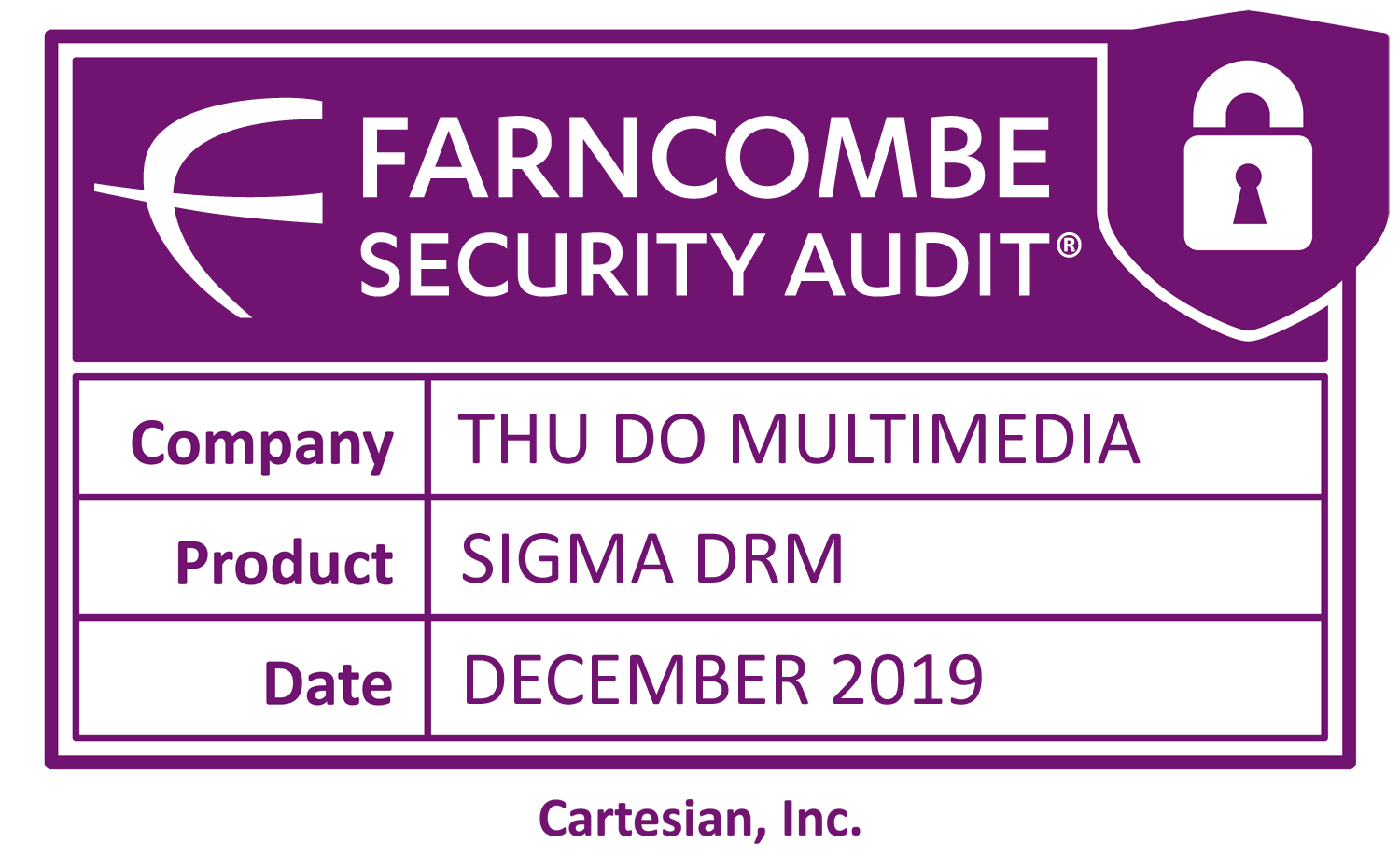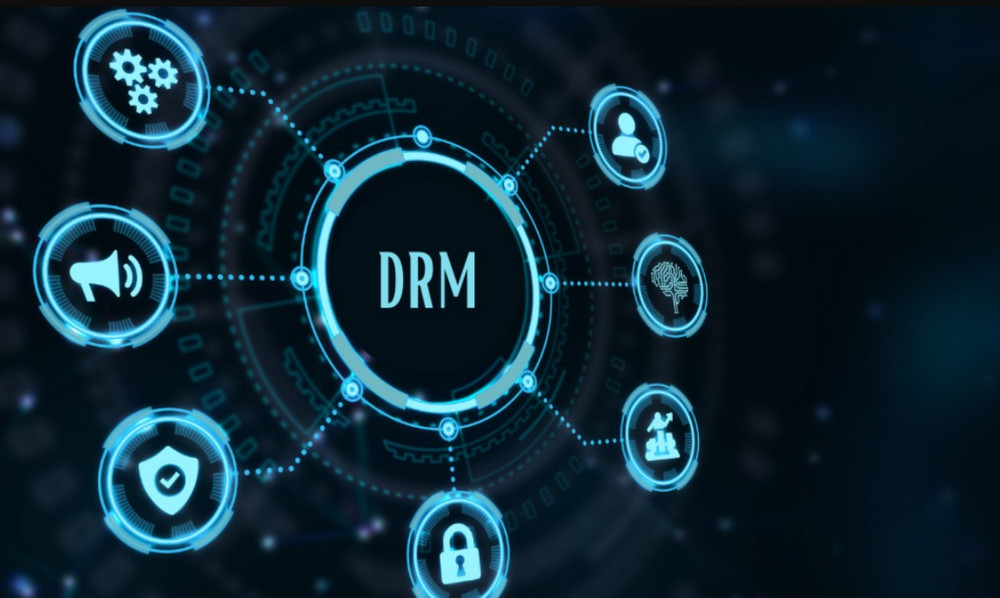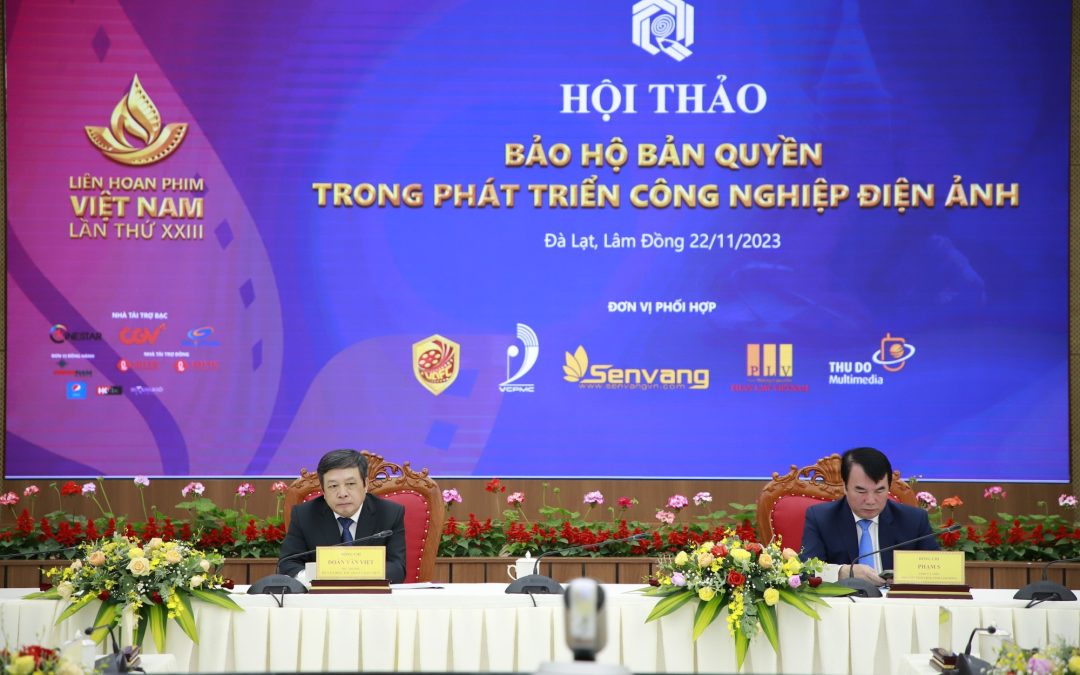
Sigma DRM and Protecting India’s Digital Heritage: Towards Sustainable Development
Miss Grand India Rachel Gupta’s victory is not only a matter of national pride but also highlights the importance of digital copyright protection in preserving India’s cultural heritage. Why is that? Let’s find out with Thu Do Multimedia!
Who is Rachel Gupta?

Rachel Gupta has become Miss Grand International 2024, marking an important milestone for India. Before Rachel Gupta, there were many beauty queens participating in international beauty pageants, but her victory at MGI is an outstanding achievement, making her the first Indian beauty queen to achieve this international crown.
On a personal level, Rachel Gupta is a famous model, a film actress and also a successful businesswoman. In acting, she is best known for the film “Kahani Rubberband Ki”.
India is statistically the country with the most copyright infringement in the world. Indian digital content is always pirated and other films are also consumed widely in India. This is a problem related to the culture and beauty of India, so surely the government, producers, directors, actors, etc. all want to find solutions and come up with appropriate policies to reduce this problem in order to protect India’s digital heritage.
The role of Miss Grand India 2024 Rachel Gupta in Elevating Indian Culture
Rachel Gupta – Representative of Indian culture
The victory of a beauty queen in the international arena is not simply a personal victory, but she represents an entire country, a strong voice for the diverse culture of the country.
Through her role, Rachel contributes to promoting artistic values, cultural beauty from costumes, music, cinema, cuisine, to the lifestyle of India, helping international friends have a deeper insight into a rich culture. Since then, India’s image has not only been affirmed in the field of beauty but also elevated in the world of global entertainment and media.
Rachel’s role is a living testament to how an individual can convey and spread national cultural pride, while at the same time arousing awareness to protect the precious traditional values of India.

Indian Culture – Bollywood Films
Bollywood is an important part of Indian culture, featuring music, dance and rich stories. Bollywood not only reflects social life but also brings unique entertainment experiences to the audience.
The globally famous film Dangal (2016) tells the true story of Mahavir who trained his two daughters to become excellent wrestlers.
Revenue of more than 50 million USD after only three weeks of release, becoming one of the highest-grossing films of all time in India
However, along with popularity comes the “stealing” of sophisticated hackers and free distribution outside of mainstream channels.
Bollywood has become a global brand, contributing to the promotion of Indian culture. Thanks to Bollywood films, audiences know about cultures such as eating with hands, headscarves, widows, traditional dishes, etc., which are very impressive to international friends.
Outstanding features of Bollywood films
- Spectacular singing and dancing
Bollywood films often have brilliant dancing and singing scenes, which are an indispensable part of the plot. These performances are not only for entertainment but also help characters express their deep emotions and desires without dialogue. - Diverse film genres
Bollywood films often combine many genres such as romance, comedy, action and tragedy in the same film, creating rich and attractive works. This is known as “masala cinema,” where different elements blend together to create a multidimensional cinematic experience. - Soap Operas
In addition to films, Bollywood also produces soap operas (long-running television series) that revolve around family relationships and romance. These series often run for hundreds of episodes and attract large audiences. - Growth of the Industry
Bollywood is one of the largest film production industries in the world, with the number of films produced annually surpassing that of Hollywood. This shows the strong growth and great potential of Indian cinema. - Celebrities
Many Bollywood actors have become cultural icons not only in India but also around the world, with names like Shah Rukh Khan and Deepika Padukone being widely known.
Digital Piracy in India – Global Top
India is ranked as one of the countries with the highest rate of piracy in the world, with millions of illegal visits to pirated websites every year. According to statistics, in 2020, India was in the top 5 countries for online piracy nationwide, with 5.6 million illegal views.

It is estimated that the industry loses about 220 billion rupees (equivalent to 2.6 billion USD) each year due to illegal copying and distribution of content. This alarming figure not only shows the level of loss of revenue but also negatively affects the creativity and development capacity of businesses, producers and artists in India.
Cultural content such as movies, music, games, and e-books have become easy to copy, download, and watch on digital platforms, reducing the value of the original product and reducing the attraction of investment in creative products.
Many Indian movies, especially newly released movies, are often spread on unofficial websites and applications immediately after their premiere. Websites such as Fmovies and BestBuy IPTV have been denounced for spreading pirated content, causing great damage to producers. These sites attract millions of users every month, showing the popularity of pirated movies. Not only are Indian movies stolen, but foreign movies are also quickly consumed illegally.
Many social accounts have created channels with “movie summary” content, cutting and pasting content and images to summarize long series, so that viewers can fully understand the content of the movie and therefore have no intention of watching the official movie. This is also considered a form of illegal consumption of films because it is not permitted by the film owner.
Challenges in protecting digital copyright in India
Protecting digital copyright in India is facing many major challenges, making the situation of infringement widespread and difficult to control. Here are some of the major obstacles in protecting digital copyright in India:
- Difficulty in law enforcement
Enforcing copyright regulations in India is difficult due to the complex and lengthy legal process. Litigation related to copyright infringement can drag on for years, reducing the incentive for content owners to pursue their rights.
It is not simply a matter of submitting documents, it involves many steps and many legal procedures, which are time-consuming and costly. Small-scale producers do not have enough funds to protect film copyright before the law. However, the compensation does not bring many legitimate benefits to the production business. As a result, pirated movies have become popular.
- The cross-border nature of infringement
Many pirated websites often have their servers located overseas, making it more difficult to handle and prevent. These sites often change their domain names frequently to avoid detection and blocking by authorities. This creates a favorable environment for infringement without being bound by local laws.
- Lack of copyright awareness
Many users are still not fully aware of the harm caused by copyright infringement. This lack of awareness leads to them easily accessing and sharing infringing content without thinking about the legal consequences.
The age group of 18-25 is the group that commits the most copyright infringement, because this is a group with low income but high entertainment needs. In India, they consider free viewing as a part of cost savings without realizing that they are violating digital copyright, helping bad guys and “stealing the brains” of producers and filmmakers.
- Rapid development of technology
Rapid development of technology has created many new channels for content distribution, but at the same time, it has complicated the control and protection of copyright. Social media platforms such as Facebook, YouTube and TikTok have become popular places to share infringing content.
Digital content is distributed through many different social media channels without requiring TV channels, publishers, and social media algorithms are very “open”, so users can easily post copyrighted content on social networks and quickly get likes, comments, shares, reups, etc. spreading across cyberspace with huge speed and volume.
Significant Revenue Loss
According to a report by Media Partners Asia, an estimated 15.5 million users are pirating online video content in India in 2022, resulting in a loss of about $348 million, or 18% of the total legal video industry revenue. If left unchecked, the number of users could rise to 19.5 million by 2027, resulting in a loss of about $456 million.
Piracy not only causes loss of revenue for producers but also affects the government exchequer by reducing the tax revenue from legitimate business activities. This loss also reduces India’s reputation in the eyes of foreign investors, affecting its ability to attract investment in the creative industries.
There is always light at the end of the tunnel…
Sigma DRM – Advanced digital copyright protection solution
Advanced Sigma DRM technology aims to help businesses protect and manage their digital content copyright. Sigma DRM’s solution allows businesses to monitor, protect, and control access to digital content, thereby minimizing the risk of copyright infringement and protecting their intellectual property. This is not a temporary solution, but it is exactly the “golden key” to help businesses plan long-term strategies and open up a “treasure” to exploit legitimate customers.
Thu Do Multimedia has verified the Sigma DRM solution with Cartesian certification – this is the world’s largest copyright protection certification. Therefore, your business can be completely assured of our solution.

Read more: Thu Do Multimedia achieved Castersian certification?
Benefits of Sigma DRM in the Indian Entertainment Industry
The application of Sigma DRM technology in the entertainment industry brings many great benefits, helping to protect content and support businesses to increase legal revenue.
Ensure legal distribution and copyright protection
Sigma DRM ensures that digital content is distributed only through legal channels, helping entertainment companies in India protect their copyright and interests. With DRM, the content will be encrypted and can only be unlocked by users with official access, thereby minimizing copyright infringement.
Minimize revenue loss
With DRM technology, companies can minimize revenue loss due to copyright infringement. According to statistics, copyright infringement costs entertainment companies in India billions of dollars every year, and DRM is an effective tool to solve this problem.
Boosting the Entertainment Industry to Achieve Target Revenue
According to forecasts, with the application of DRM technology to copyright management and digital content distribution, the Indian entertainment industry can increase its revenue to reach the target of 5 billion USD per year. DRM solutions not only help reduce legal costs and costs arising from handling copyright infringement but also create trust for investors and customers in a transparent and sustainable business environment.
Read more: Thu Do Multimedia’s partners succeed with Sigma DRM
Choose copyright protection or let it “fall freely”
In actual numbers, the cost of investing in DRM technology is actually not as expensive as businesses think. This cost is only 1/10,000 of the cost of lost revenue due to content being made public on pirated websites.
According to statistics from FICCI and Deloitte, India loses billions of dollars each year from pirated content.
DRM costs are only a small percentage of the revenue at risk of being lost if the content is not protected. Companies can protect their revenue with DRM investment costs many times less than the value lost without protection technology.
Protect long-term revenue
By investing in DRM, businesses not only protect immediate revenue but also create a foundation to protect long-term intellectual property value, helping to maintain competitive position and brand reputation.
Minimize legal costs
When copyright is violated, businesses often face significant legal costs to sue, investigate and handle violations. Investing in Sigma DRM’s DRM solution not only minimizes direct revenue loss but also saves these indirect costs, helping businesses not to spend time and resources on legal procedures.
Which businesses should use DRM
Whether small businesses or large corporations, they should deploy our Sigma DRM solution. Because we have a comprehensive copyright protection solution that can meet all the needs and desires of businesses for their digital products. The investment cost for this solution is not large, it accounts for a very small amount of the revenue loss that businesses have to endure when content is pirated.
Many small film production companies tend to think that their products do not need copyright protection because they think that the reach of their films is limited, or that their popularity is not high enough to be a target for infringement. However, in reality, every creative product, large or small, is at risk of being copied and distributed illegally, and small productions are even more vulnerable to copyright infringement.
When small film production companies invest in copyright protection technology, they are also sending a clear message about their professionalism and seriousness in protecting their intellectual property. This not only creates trust with partners and investors, but also opens up opportunities for development, cooperation and expansion of production scale in the future.
Copyright protection is not only for large businesses but is actually necessary for all production scales, especially small film businesses. Investing in copyright protection solutions from the start will help small businesses protect revenue, maintain reputation, and prepare for future growth opportunities.
The Importance of Digital Heritage Protection in Preserving National Identity
Digital copyright protection is not only an economic measure but also a means to protect and preserve the cultural identity of the country against the increasing situation of copyright infringement. When cultural content is copied and distributed illegally, the cultural value of the product is reduced, and the inherent uniqueness of the digital heritage is lost.

In the context of international integration, digital copyright protection helps maintain the uniqueness and value of domestic cultural products. Films, songs, books and digital documents containing the history, customs, and traditions of a country need to be protected from being copied illegally or losing their uniqueness when integrating with other cultures.
The digital world opens up opportunities for cultural development through digital platforms, but also brings higher risks of copyright infringement. Digital copyright protection is a way to ensure that cultural products retain their value when they are distributed to the public legally, thereby contributing to the sustainable and official dissemination of national cultural values in the international market.
By protecting the copyright of digital cultural and artistic products, India’s digital economy will grow sustainably thanks to the increase in the value of domestic products. As international consumers and audiences access protected digital products, the revenue from the use of official products will increase, thereby helping India’s digital economy grow strongly.
Digital copyright protection alone is not enough…
Currently, CDN infrastructure in India is still limited, unable to meet the growing demand for speed and quality of digital content delivery nationwide. Single CDNs often face challenges such as limited coverage, peak traffic congestion, and lack of optimization to ensure a smooth user experience.
Our Sigma Multi-CDN solution is a necessary step forward, combining the strengths of multiple CDN providers to create a more flexible, robust, and comprehensive content delivery network. By using Multi-CDN, Sigma provides businesses in India with a more stable content delivery solution, automatically switching between CDNs to reduce load, optimize performance, and ensure content reaches users as quickly as possible, regardless of where they are in the country.
There are many great solutions in OTT that businesses can deploy to both protect digital products with Sigma DRM and create multiple passive revenue streams. With over 14 years of experience, working with over 20 domestic and foreign partners, we are your choice, ensuring to bring long-term, sustainable benefits to businesses in the shortest time after implementation.
Cooperate with Thu Do Multimedia to strongly protect the copyright of diverse digital products like the way Miss Grand India 2024 enhances cultural status in the international arena.

















Recent Comments